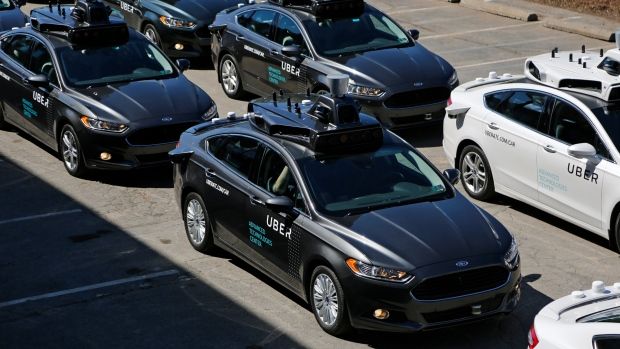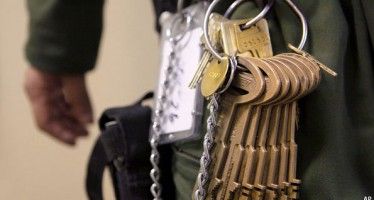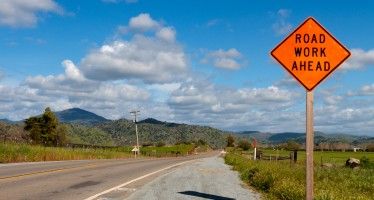DMV preps test rules for driverless delivery vehicles

In December 2015, when the state Department of Motor Vehicles released draft regulations for the testing of driverless vehicles, California tech firms were stunned by their onerousness. Google immediately objected to a proposed requirement that drivers always had to be behind the wheel of autonomous test vehicles.
Soon after, a consortium including TechNet, the Silicon Valley Leadership Group, the Bay Area Council, the Wireless Association, the Consumer Technology Association, the Information Technology Industry Council and the Auto Alliance issued a statement pleading with the administration of Gov. Jerry Brown to encourage, not discourage, the nascent driverless vehicle industry.
Instead, the DMV initially decided to allow each of the state’s 480-plus incorporated cities and 58 counties to set up their own rules for such testing – potentially creating an immense maze for driverless vehicle companies.
To the relief of executives with Google, Uber, Lyft, Volvo and 40-plus other companies interested in testing their vehicles in the Golden State, the state government reconsidered its position. Beginning in April 2018, new DMV rules allowed for autonomous vehicles to be tested without a human behind the wheel. So far, only one company has met DMV’s standards and obtained a permit for such tests – Mountain View’s Waymo. But far more could qualify in coming years.
Now, there is a fresh sign of the DMV’s willingness to embrace new vehicular technology. On April 12, the agency released draft regulations allowing for testing of autonomous delivery vehicles. Heavy-duty vehicles that weigh more than 10,000 pounds are not allowed, but standard cars, trucks and vans can be tested. The DMV will only issue permits for fully autonomous testing to companies that have met the same safety standards that Waymo did. The rules are expected to be finalized by December.
Driverless deliveries may face less public anxiety
With polls showing millions of Americans are very nervous about riding in driverless vehicles, tech and marketing experts told The Verge website in January they were much more likely to gain initial acceptance for delivery purposes.
Robot deliveries with much smaller vehicles have already proven instant hits. San Francisco-based startup Starship Technologies has enjoyed huge success since January, when its 25 robots began deliveries on the 800-acre campus of George Mason University in Fairfax, Virginia. Navigating campus paths and sidewalks at 4 miles per hour, the robots deliver small coolers capable of holding up to 20 pounds of groceries. Students use an app to direct the robots where to go and are sent access codes to open the coolers. Starship collects $1.99 per order.
A March 25 Washington Post story depicted university officials as initially unsure what sort of reception the robots would get. But on the first day of deliveries, “the machines were flooded by so many dinner orders that school officials had to pull the plug, shutting off orders so that robots weren’t operating late into the night, far behind schedule,” the Post reported.
Since then, they’ve become an accepted convenience of campus life at the university.
S.F. firm’s college delivery robots only the start
In late March, Starship announced that an even bigger order of food-delivery robots, 30-plus, had been shipped to a second U.S. college – Northern Arizona University in Flagstaff. Unlike George Mason, NAU leaders were so confident the robots would be a hit with students that the university issued a press release quoting NAU President Rita Cheng as welcoming them to campus.
But much bolder plans are in the works. The Verge’s report in January noted that Burlingame-based startup Udelv was partnering with Walmart on an autonomous grocery-delivery service that will use the sort of vehicles that the California DMV is now crafting rules for. Home-food delivery services could be a $100 billion annual industry by 2025, the tech website reported.
The Udelv report came shortly after Cruise – GM’s autonomous vehicle company – announced it was teaming with San Francisco-based DoorDash on the same sort of food-delivery venture.
Chris Reed
Chris Reed is a regular contributor to Cal Watchdog. Reed is an editorial writer for U-T San Diego. Before joining the U-T in July 2005, he was the opinion-page columns editor and wrote the featured weekly Unspin column for The Orange County Register. Reed was on the national board of the Association of Opinion Page Editors from 2003-2005. From 2000 to 2005, Reed made more than 100 appearances as a featured news analyst on Los Angeles-area National Public Radio affiliate KPCC-FM. From 1990 to 1998, Reed was an editor, metro columnist and film critic at the Inland Valley Daily Bulletin in Ontario. Reed has a political science degree from the University of Hawaii (Hilo campus), where he edited the student newspaper, the Vulcan News, his senior year. He is on Twitter: @chrisreed99.
Related Articles
Proposed ballot initiative would roll back recent criminal justice reforms
Citing an increase in violent crime rates, a coalition of law enforcement and victim’s rights groups announced last week a
Bill removing tampon sales tax advances in Legislature
A bill to eliminate sales tax on feminine hygiene products came one step closer to becoming law on Thursday, ok’d
CA GOP flexes Sacramento muscle on road repairs
In a move that handed Sacramento Republicans a sudden share of power, state legislators finally turned their attention to California’s deteriorating infrastructure.




